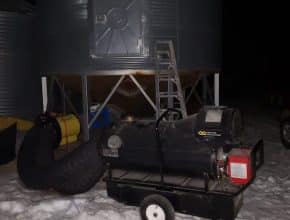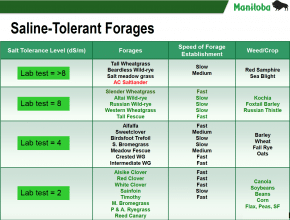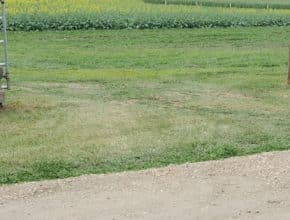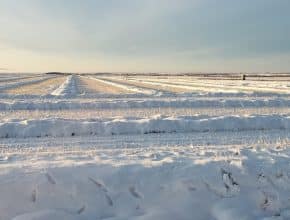Three questions on seed rules for Certified No.1 hybrid canola…
March 11, 2020 - Issue 4
-
-
A lot of farmers who normally apply nitrogen fertilizer in the fall didn't get the opportunity with the late harvest and unfavourable weather last fall. In this podcast, host Jay Whetter talks with CCC agronomy specialist Warren Ward and Manitoba Agriculture crop fertility specialist John Heard about six options for nitrogen application in the spring…
-
“There is a lot of high-moisture canola on farms this spring and most of it will have to be managed before delivery,” says Angela Brackenreed, agronomy specialist with the Canola Council of Canada. She says farmers probably shouldn’t rely on being able to deliver high-moisture canola to elevators in time to reduce the risk…
-
Recent wet and dry cycles have increased topsoil salinity in many parts of the Prairies over the past few years. “Salinity is not a salt problem, it’s a water problem,” says Marla Riekman, soil management specialist with Manitoba Agriculture and Resource Development. “Wet years bring the water table closer to the roots, and salinity wicks up to the soil surface.”…
-
Simple but effective... Tank mixes are recommended to control canola volunteers and glyphosate-resistant kochia, and to protect the long-term viability of glyphosate…
-
-
Farms can run their own strip trials to test how a particular practice or product performs in a local environment – and this is a good time to make a plan…
-
Working with its farmer cooperators, Farming Smarter gets field scale research results and the farmers gets experience in running effective comparison trials…
-
Unharvested 2019 crop will be the first thing many Western Canadian farmers will have to deal with this spring. There is no easy or one-size-fits-all answer for how to best handle these crops. The ideal option is probably to combine them because they’ll be worth something, crop insurance may require it, and this step removes most of the volunteer seedbank…




